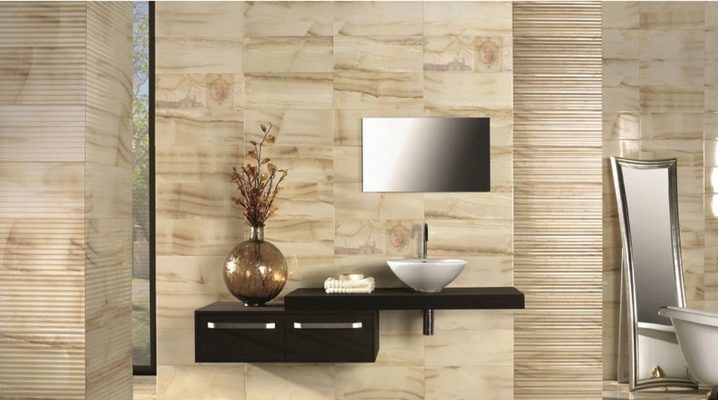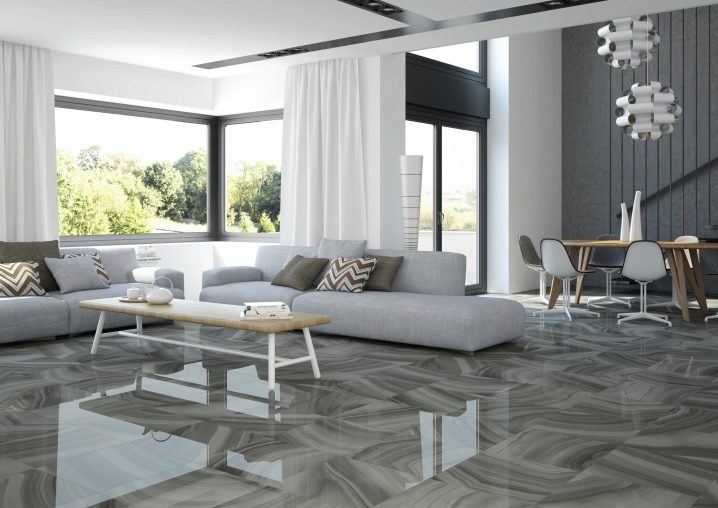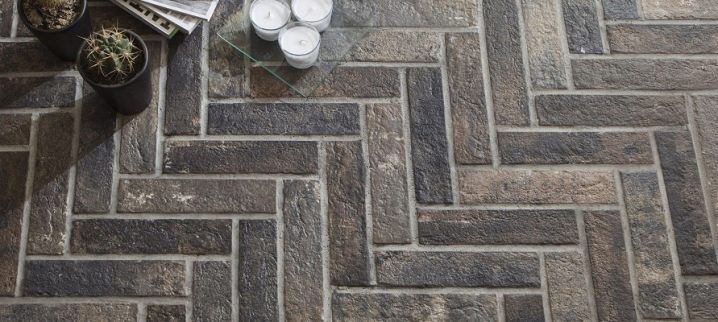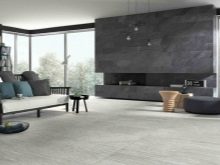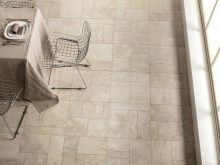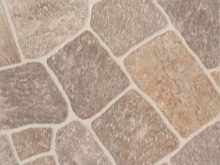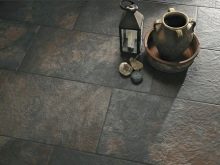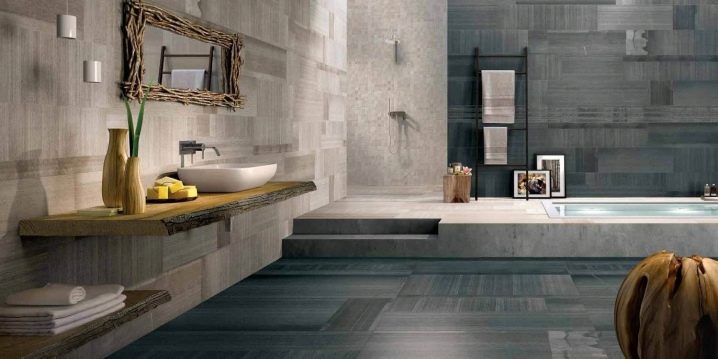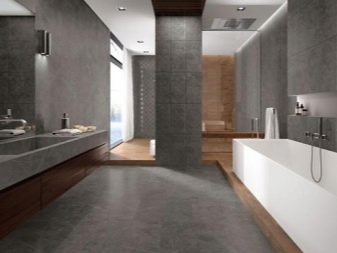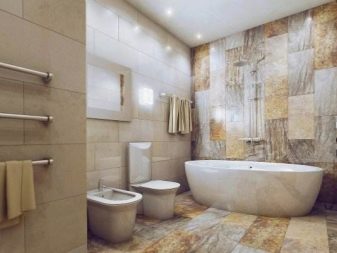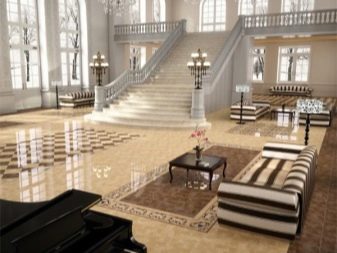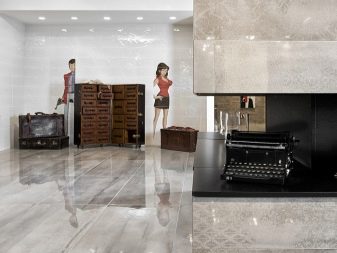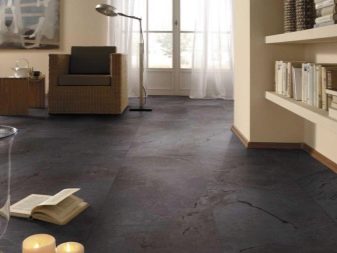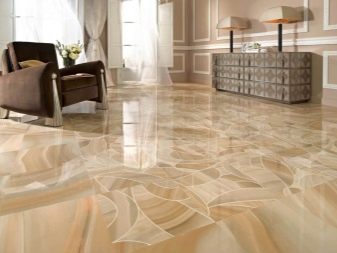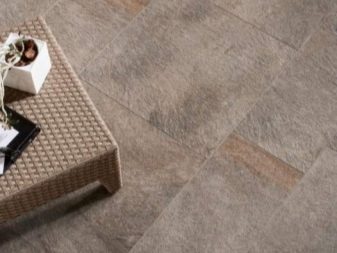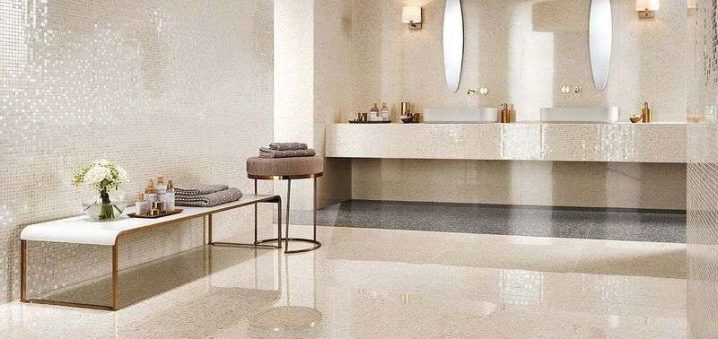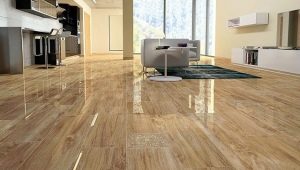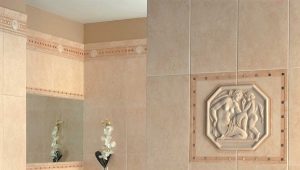Porcelain stoneware: application features
Natural stone trim looks attractive and original. But this material has its drawbacks, including high price and instability to individual impacts. Using porcelain stoneware, both of these problems are solved, but certain rules must be strictly followed.
Special features
Initially, all types of gray-colored porcelain stoneware were considered to be imitations of natural breeds. But the similarity is only in resistance to ingress of water and in mechanical strength, the surface is completely smooth, there are only minor inclusions. The outer layer of porcelain stoneware is traditionally painted in a “mouse” shade. There are, however, more modern solutions that can imitate, for example, the appearance of a brick, which allows you to confidently use them in a loft and minimalist setting.
Modern technologies allow imitating the surface of marble, granite, limestone, jasper, quartzite and other unique stones.
The tuff layer and the elegance of precious stones, the solid, indestructible wall of concrete - all this can be the appearance of ceramic granite. It is important to take into account that in some cases detailed imitation is used, and in others - supplemented with artistic motifs and elements. The decoration material is mainly decorated with cuts, which can even be covered with gold. But on this the possibilities of registration and the worked drawings are far from being exhausted.
Tips for choosing
Selecting tiles, you should not rely on the words of the seller that it reproduces the look of marble or travertine. Only a few varieties of such coatings really look impressive, while others are more disappointing and do not meet expectations. It is worth stopping at the most natural color, because it is a win-win solution. A very good step in many cases is the use of imitation slate, which has a lot of natural tonalities and is endowed with surface roughness.
It should also find out what are the dimensions of the blocks. Large (120x60 cm) plates create a refined atmosphere and are more romantic than the usual options (60x60 cm).But apart from this consideration, it is worth paying attention to how large the area of the target room is, and what its geometric shape is.
Advantages of coverage
Imitation of natural materials with the help of porcelain stoneware has the following positive aspects:
- harmonious entry into any interiors;
- excellent color retention even with active ultraviolet irradiation;
- high resistance to mechanical damage and friction;
- very low water absorption;
- resistance to the effects of low temperatures and other conditions arising on the street in winter;
- the ability to survive significant temperature jerks, repeated ability to freeze and heat.
Species
It is quite attractive to use wall porcelain tile, which reproduces the appearance of paving stones. There is no such room that would not be more interesting and functional with the introduction of such a coating. The ease of washing will please a large number of housewives who are afraid of difficulties with care. Moreover, even potent household chemicals and hard washcloths are allowed: they will not damage the surface.
Floor ceramic granite can be divided into several groups.The so-called technical variety is as close as possible to a simple natural stone. The apparent fading should not be misleading - the developers have managed to make an excellent material, which tolerates the most destructive effects. For decades, the cover will serve, successfully retaining the original beauty.
It is important to know that matte porcelain is not polished, this approach allows it to maintain a natural look, it is easy to make contact with moisture. This cover is recommended for bathrooms and toilets.
Polished tiles can not be put on the bathroom floor, as they will slide too much. In addition, the gloss under the action of friction quickly fade.
The average level of slip is characteristic of glazed porcelain stoneware, on which enamel is applied before the firing begins. Durability, resistance to abrasion of such a product at a decent level. However, it is not recommended to apply where many people go.
Structured coatings have excellent relief, imitating natural stone as accurately as possible. All hillocks, chips, fractures and cavities are effectively reproduced.The soft gloss of the satin material is obtained by applying mineral salts before placing the billet in the kiln. The product almost does not slip, but its service life is quite small.
Porcelain tile under onyx after polishing has a strength of 6.5 on the mineralogical scale, and if it is not polished, this figure is 7-8 points.
Surface types
In addition to color and a specific type of simulated stone, texture is of great importance. Rectified porcelain has a cut that allows you to give a certain size and make the pattern of the same type. This approach facilitates the creation of externally continuous surfaces that truly look as if they were made from natural minerals.
There are the following types of coatings:
- mosaic varieties;
- homogeneous types;
- Partially painted tiles.
Mosaic coating can be both matte and glazed, and a kind of puzzle is applied on its surface. But such an attractive image requires expensive, complex preparation and rigorous adherence to technological standards. In addition, the installation is quite time consuming.
Homogeneous material is obtained by adding to the main mixture natural pigments that color the stone to the full depth. In this way, color will remain unchanged at any time. But the partially colored varieties below are black and white, and only their surface is colored. As a result, the number of allowable grinding is very small.
The seamless tile differs in the approach to laying: it is absolutely impossible to use crosses to close the seams. The absence of gaps means that they do not need to be completely erased or filled with anything. It is important to know that if you take a porcelain stoneware with a cut, then you need to ensure that all the faces are even. Otherwise, maintain cleanliness will be difficult.
See the following video for the advantages and disadvantages of porcelain stoneware in marble and natural stone.
